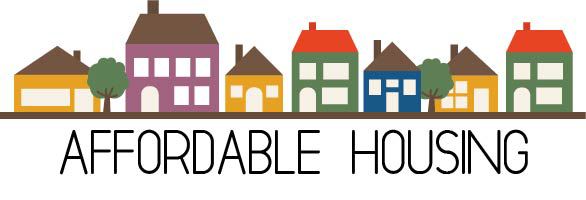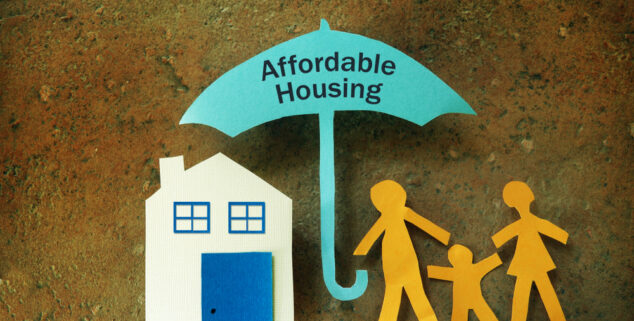Inexpensive Homeownership Options for First-Time Homebuyers
As the real estate market remains to advance, first-time buyers encounter unique obstacles in safeguarding budget-friendly homeownership alternatives. Numerous sources, consisting of entitlement program programs, low-down-payment home mortgages, and targeted gives, have arised to alleviate financial stress. These efforts not only assist in homeownership but also foster area security and economic development. Navigating these alternatives can be complicated, and understanding which pathways are most beneficial requires mindful factor to consider. What techniques can potential home owners utilize to maximize their possibilities in this landscape?
Government Aid Programs
Entitlement program programs play a crucial role in making homeownership possible for lots of people and families. These programs intend to alleviate the monetary worry related to acquiring a home, especially for new purchasers. By using financial assistance, gives, and tax incentives, federal government campaigns aid connect the space between rising real estate costs and the buying power of possible homeowners.
Different programs are readily available at the federal, state, and neighborhood levels. As an example, the Federal Real Estate Administration (FHA) offers insurance on financings, enabling lending institutions to provide more positive terms, such as lower deposits and decreased interest rates. Furthermore, state and regional federal governments typically have their very own initiatives, which might include deposit support programs, property buyer education and learning programs, and favorable mortgage terms.
These programs are developed to address the unique obstacles encountered by reduced- to moderate-income households, including restricted savings and credit report. By fostering an environment where homeownership is more available, entitlement program programs not just support individual aspirations but additionally add to neighborhood stability and economic growth. Understanding and utilizing these sources can dramatically improve the prospects of effective homeownership.
Low-Down-Payment Home Loans
For numerous ambitious home owners, low-down-payment home mortgages present a feasible path to homeownership, especially in today's difficult housing market. These mortgage options typically require deposits varying from 3% to 5%, making it easier for first-time buyers to go into the market without the concern of saving for a significant down repayment.
Various lenders use low-down-payment programs, including conventional lendings backed by Fannie Mae and Freddie Mac, along with government-backed choices like FHA lendings. These home mortgages are developed to suit individuals with limited cost savings while still providing competitive rate of interest. Importantly, they allow buyers to maintain more cash money for other necessary expenditures, such as relocating costs, home inspections, and possible renovations.
Nevertheless, prospective home owners need to be conscious of the trade-offs linked with low-down-payment mortgages. A smaller deposit may lead to higher regular monthly repayments and the need of exclusive home mortgage insurance (PMI), which safeguards loan providers in situation of default. It is crucial for first-time customers to perform thorough study and seek advice from with home mortgage experts, ensuring they choose a low-down-payment choice that lines up with their lasting monetary goals.
First-Time Buyer Grants
Lots of newbie property buyers discover that grants can dramatically alleviate the monetary worry of purchasing a home, matching low-down-payment home mortgage choices. These gives, commonly provided by state and neighborhood governments or charitable organizations, supply monetary aid that does not call for payment, making them an attractive alternative for those entering the real estate market.
Qualification for new property buyer grants normally depends upon earnings, creditworthiness, and the acquisition cost of the home. Numerous programs are developed to assist reduced- to moderate-income households, guaranteeing that assistance reaches those that need useful reference it most. The application process typically involves documentation of monetary condition, buyer education courses, and sometimes even a commitment to remain in the home for a particular period.
The quantity useful differs commonly, with some gives supplying numerous thousand bucks to help cover shutting expenses or down settlements. Looking into available grants in your area is crucial, as programs often transform and might have specific requirements. By leveraging these funds, novice buyers can make homeownership more accessible, eventually attaining their imagine possessing a home while alleviating the first economic strain.
Innovative Neighborhood Initiatives
Ingenious area campaigns are playing a critical duty in increasing budget-friendly homeownership options for citizens. These initiatives often involve joint efforts in between neighborhood federal governments, non-profit organizations, and economic sector stakeholders to develop lasting housing remedies tailored to community requirements.
One noteworthy strategy is the establishment of area land counts on (CLTs), which enable residents to purchase homes while the land stays had by the count on. This model aids maintain affordability in time and avoids speculative rate rises. In addition, CLTs often give educational resources and assistance solutions to equip novice property buyers.
An additional reliable initiative is the advancement of mixed-income real estate tasks, which blend cost effective systems with market-rate homes. This approach cultivates inclusive communities and lowers the preconception commonly connected with low-income real estate. Additionally, regional governments are progressively supporting zoning reforms to help with the building and construction of accessory home units (ADUs), which can provide added rental revenue for homeowners while enhancing real estate availability.

Tips for Budgeting and Saving

Next, establish a committed financial savings account specifically for your future home acquisition. Goal to save a percent of your revenue continually, ideally 20% or even more, to construct a significant deposit. Make use of automation tools, such as straight deposit or automatic transfers, to make saving much easier and more consistent.
Furthermore, take into consideration taking on the 50/30/20 rule: designate 50% of your income to needs, 30% to desires, and 20% to savings and financial obligation repayment - Affordable Homeownership. This technique promotes balanced financial health and wellness

Conclusion
In click this link recap, cost effective homeownership options for new property buyers encompass different sources such as government help programs, low-down-payment mortgages, and gives. By leveraging these financial tools, people can browse the intricacies of homeownership, ultimately adding to a much more equitable real estate landscape.
As the real estate market proceeds to develop, newbie homebuyers face unique obstacles in securing budget-friendly Clicking Here homeownership options. By promoting a setting where homeownership is a lot more obtainable, government aid programs not only sustain private aspirations yet also add to community security and financial development. By leveraging these financial sources, first-time buyers can make homeownership much more available, ultimately attaining their desire of having a home while alleviating the first financial strain.
In summary, budget friendly homeownership choices for new buyers incorporate numerous resources such as federal government assistance programs, low-down-payment home mortgages, and gives. By leveraging these financial tools, individuals can browse the complexities of homeownership, inevitably adding to a more equitable housing landscape.